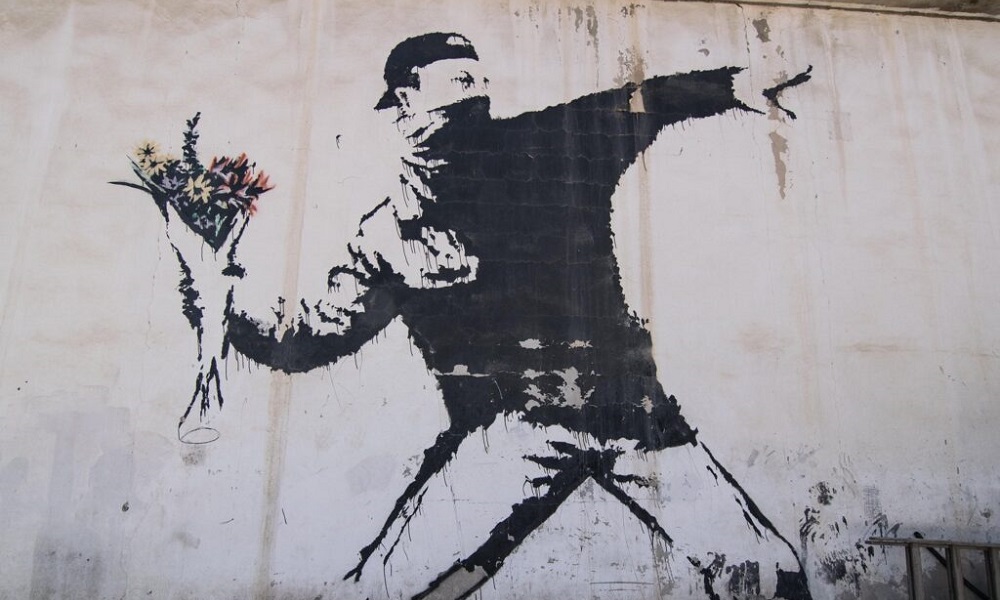In a recent decision, the EUIPO has cancelled street artist Banksy’s trademark for the well-known artwork ‘Flower Bomber” for being filed in bad faith. The EUIPO ruled that at the time the application was filed, the artist had no intention of using the sign as a trademark and that he only used it subsequently to avoid it being cancelled for nonuse –in the words of Banksy himself.
Banksy is as well known for his artwork as he is for his effort to remain anonymous. His disdain for and rejection of copyrights is also widely known. A good example of this is one of his most iconic quotes, from his book Wall and Piece: “copyright is for losers”.
In 2014, Pest Control Office, the company that acts as Banksy’s legal representative – precisely to safeguard his anonymity – filed an application to register the graffiti image Flower Bomber, which originally appeared on a building in Jerusalem in 2005. A total of 14 works by the artist have been registered as trademarks by the EUIPO.
The conflict arose in March 2019, when a greetings card company, Full Colour Black, challenged the Flower Bomber trademark, on the basis of registration in bad faith (article 59.1 b) of the European Trademark Regulation–EUTMR-) because it was not distinctive and also because it was descriptive of the goods and services it covered, in relation to articles 7.1 b) and d 7.1 c) of the Regulation.
In response to the challenge, once the proceeding had started, Banksy opened his own store selling stationary and decorative merchandise with the sole intention – according to the statements made by the artiest himself and his legal representatives – to comply with the use requirement to keep the trademark. The launch of the store was described by the artist as “possibly the least poetic reason to ever make some art: a trademark dispute”.
In finding that the trademark had been filed in bad faith, the EUIPO argued that the artist never really intended to use the sign registered as a trademark, i.e. to indicate the origin of goods and services in the market, but rather that he had filed the application to prevent its use by third parties. The use of the mark after registration was solely intended, as numerous statements by the artist and his representative demonstrate, to circumvent the application of article 58.1 a) EUTMR. Consequently, in the opinion of the EUIPO, it cannot be considered legitimate use of a trademark.
The ruling also took into account how Banksy himself tolerates, and even encourages others through his website to use, change and reproduce his work, provided that it is not for commercial purposes. As the EUIPO indicated, the appropriate way of protecting these interests is by copyright, not as a registered trademark. Banksy’s legal representatives tried to justify the reliance on trademark rights arguing that taking legal action under copyright law required the artist to lose his anonymity which would cause irreparable damage to his persona. However, this did not alter EUIPO’s conclusions regarding the absence of any real intention to use the sign as a trademark and therefore upheld Full Colour Black’s application to invalidate the trademark.
The invalidation of the Flower Bomber trademark paves the way for similar proceedings in relation to other works that the artist has registered as EU trademarks, putting Banksy in a difficult position when it comes to protecting his works and maintaining his precious anonymity.
Polina Shishkunova
Garrigues Intellectual Property Department






